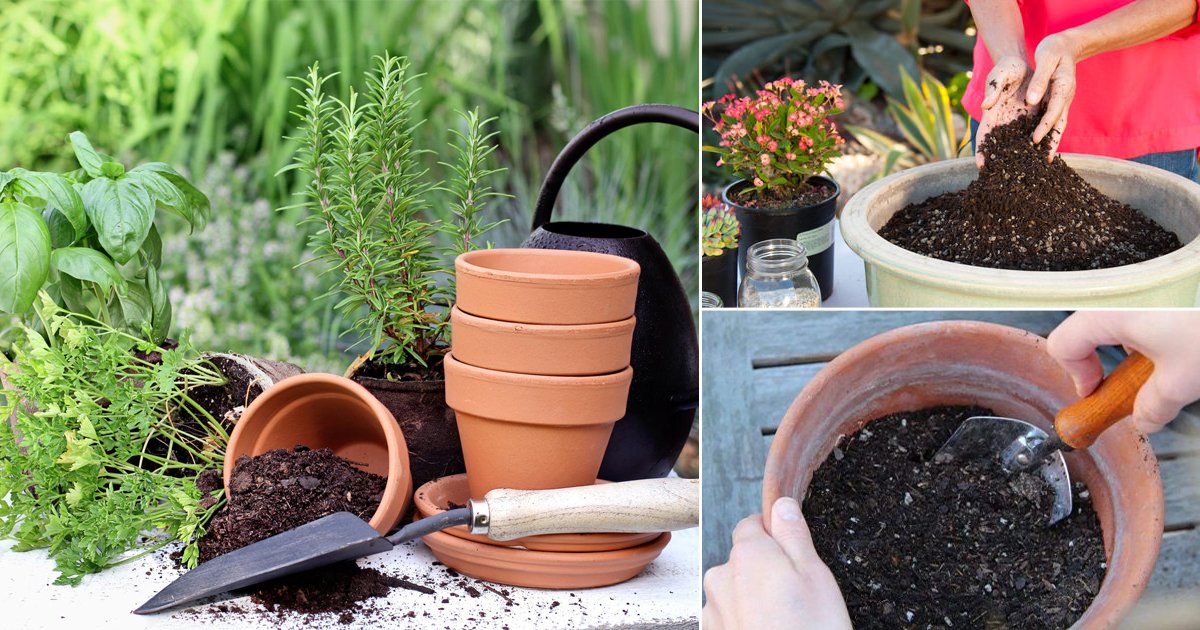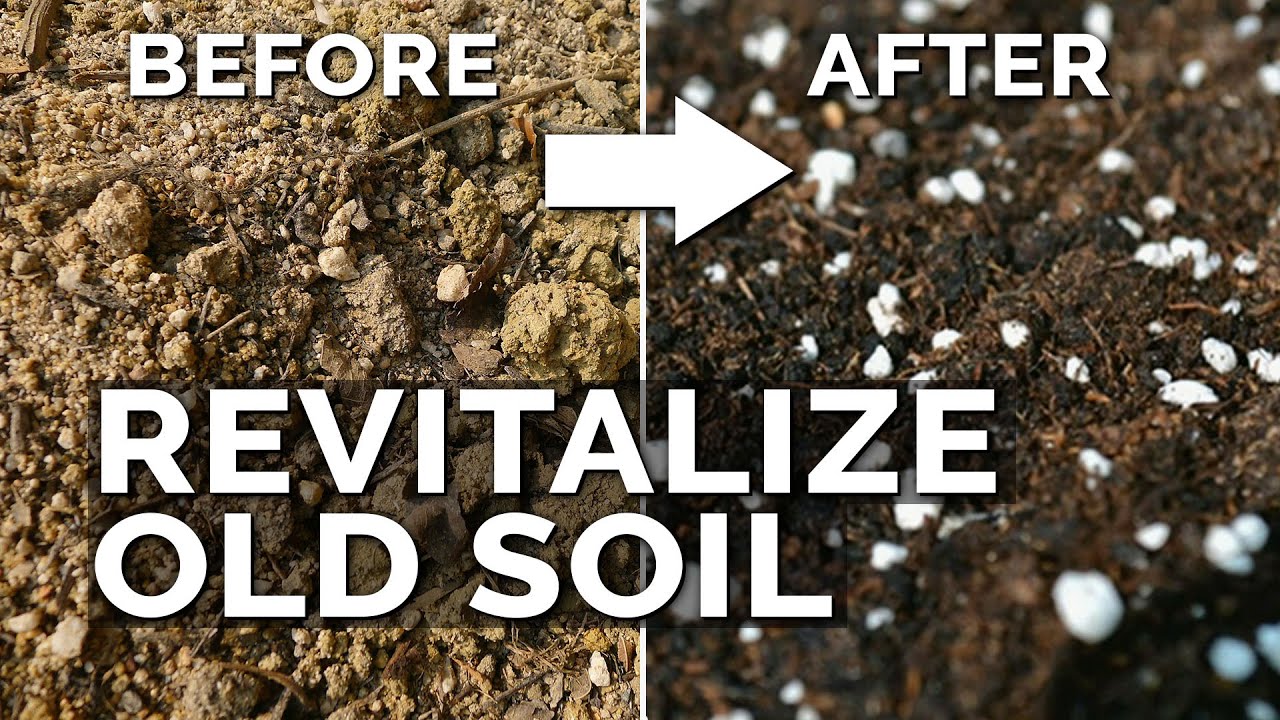To rejuvenate old soil, you can add organic matter and use natural amendments. Doing so improves soil structure and fertility, promoting healthy plant growth.
Additionally, it helps retain moisture and nutrients, preventing erosion and reducing the need for chemical fertilizers. This article provides tips and techniques for rejuvenating old soil, promoting sustainable gardening practices. Old soil can be a challenge for gardeners as it often lacks essential nutrients and has poor drainage.
However, with the right approach, it is possible to revitalize and breathe new life into tired soil. By understanding the needs of your plants and taking the necessary steps to improve your soil, you can create a thriving garden environment that supports robust growth and abundant harvests. From composting to cover cropping, the options for rehabilitating old soil are diverse and tailored to fit different gardening preferences. So let’s explore some effective methods to rejuvenate old soil and turn it into a fertile, nutrient-rich foundation for your plants.

Credit: balconygardenweb.com
Understanding The Need For Soil Rejuvenation
Understanding the need for soil rejuvenation is crucial for maintaining a healthy and productive garden. One of the signs of depleted soil is the lack of nutrients, which can lead to stunted plant growth and poor yields. When plants are grown in old soil, they struggle to access the vital nutrients they need. This can result in weak plants that are more susceptible to pests and diseases.
Rejuvenating old soil is important to revitalize its fertility. By replenishing essential nutrients and organic matter, plants can thrive and reach their full potential. Adding compost or organic fertilizers can help improve soil structure, retain moisture, and support the growth of beneficial microorganisms.
It’s recommended to regularly test the soil to determine its nutrient levels and pH. This allows gardeners to make informed decisions on the specific amendments needed for soil rejuvenation. With proper care and attention, old soil can be rejuvenated, leading to healthier plants and a thriving garden.
| Improves Nutrient Levels | Enhances Soil Structure | Increases Water Retention |
| Helps plants access necessary nutrients for growth | Creates a looser soil texture for better root growth | Reduces water runoff and improves plant hydration |
| Promotes the growth of beneficial microorganisms | Prevents compaction and improves soil aeration | Reduces the frequency of watering |
| Boosts plant resilience and resistance to diseases | Increases nutrient retention |
How to Rejuvenate Old Soil: Step by Step Guide
Analyzing Soil Composition
Soil testing methods play a crucial role in rejuvenating old soil and ensuring healthy plant growth. By identifying nutrient deficiencies and assessing the pH level, you can determine the necessary amendments and adjustments. Soil testing methods involve analyzing various parameters to get a comprehensive understanding of the soil composition.
| Soil Testing Methods | Advantages |
|---|---|
| Identifying Nutrient Deficiencies | – Helps in tailored nutrient supplementation – Enables targeted fertilizer application |
| pH Level Assessment | – Determines soil acidity or alkalinity – Allows adjustments for optimal pH levels |
By conducting these soil tests, you gain valuable insights into the soil’s nutritional status and pH balance, enabling you to make informed decisions regarding soil amendments, compost or fertilizer additions, and overall soil management strategies. Understanding the soil composition empowers gardeners and farmers to optimize plant health and maximize crop yield.
Building Organic Matter
To rejuvenate old soil, one effective technique is to focus on building organic matter. Composting is a great way to accomplish this goal. **Utilizing green manure** is one approach that entails planting certain crops, such as clover or vetch, and later incorporating them back into the soil. This helps add organic matter and nutrients. Another method is **incorporating organic amendments** like well-rotted compost or aged manure.
These materials add organic matter to the soil, improving its structure and nutrient content. When using compost or manure, it is important to ensure they are properly aged and free from harmful chemicals or pathogens. By implementing these **composting techniques**, you can enhance the health and fertility of your old soil, laying the foundation for vibrant and productive plant growth.
Restoring Soil Fertility
Restoring soil fertility is essential for maintaining healthy plant growth and maximizing agricultural productivity. There are several effective methods to rejuvenate old soil, including:
| Using mineral supplements |
|---|
| Incorporating essential minerals, such as nitrogen, phosphorus, and potassium, into the soil helps replenish nutrient levels. These supplements are available in various forms, such as granules or liquid, and should be applied according to the specific needs of the soil. |
Nutrient-rich cover crops
Planting cover crops, such as legumes or grasses, can help improve soil fertility by adding organic matter and fixing nitrogen. These crops should be grown during fallow periods or as green manure, and later tilled into the soil to enhance its nutrient content.
Incorporating beneficial soil microbes
Introducing beneficial soil microbes, like mycorrhizal fungi and rhizobia bacteria, can significantly enhance soil fertility. These microscopic organisms form symbiotic relationships with plants and assist in nutrient uptake, disease resistance, and overall plant health.
Improving Soil Structure
Improving soil structure is essential for rejuvenating old soil and promoting healthy plant growth. Proper soil aeration is the first step to achieving this. Adequate aeration helps to prevent compaction, allowing roots to access oxygen and nutrients more efficiently. This can be achieved by employing various techniques, such as regular tilling or plowing, which loosen the soil and create channels for air to circulate.
In addition, incorporating organic matter into the soil can also improve its structure. Organic matter, such as compost or well-rotted manure, enhances soil drainage and water-holding capacity, while also providing essential nutrients for plants. By utilizing these methods, gardeners and farmers can revitalize their old soil and create a fertile environment for their crops.
Managing Soil Moisture
Managing soil moisture is a crucial aspect of rejuvenating old soil. Proper irrigation techniques ensure that plants receive the necessary amount of water without wastage. *Mulching methods* offer an effective solution to retain soil moisture by reducing evaporation and controlling weed growth. Organic mulch, such as straw or wood chips, can also contribute to soil fertility as it decomposes over time.
Water conservation practices play a vital role in soil moisture management. *Using drip irrigation* instead of overhead sprinklers can save significant amounts of water. Drip lines deliver water directly to plant roots, reducing evaporation and runoff. Another method is *installing rain barrels* to collect and store rainwater for later use in irrigation. This not only conserves water but also reduces reliance on external water sources.
| Irrigation techniques | Mulching methods | Water conservation practices |
|---|---|---|
| Using drip irrigation | Organic mulch | Installing rain barrels |
| Reduced evaporation | Control weed growth | Conserves water |
| Delivers water directly to roots | Improves soil fertility | Reduces reliance on external sources |
Controlling Soil Erosion
Soil erosion is a common problem that can affect the quality and productivity of your garden or agricultural land. To rejuvenate old soil and prevent further erosion, implementing erosion control measures is crucial. Building terraces and contouring the landscape can help in controlling soil erosion by diverting the flow of water and reducing its speed. This helps to prevent the soil from being washed away.
Another effective measure is planting ground cover crops. These crops provide a protective layer on the soil surface, reducing the impact of raindrops and preventing erosion. They also help to improve the soil structure and increase its organic matter content, restoring its fertility over time.
Maintaining Soil Health
| Crop rotation strategies Implementing crop rotation strategies can be highly beneficial for maintaining soil health. By rotating different crops in the same area over time, it helps prevent the depletion of specific nutrients from the soil. Each crop has different nutrient requirements, and by alternating them, the soil has an opportunity to replenish essential elements. For example, planting legumes such as beans or peas improves nitrogen levels in the soil. Additionally, crop rotation disrupts the life cycle of pests and diseases that may have become established in the soil, reducing their impact and minimizing the need for chemical interventions. Integrated pest management Weed control methods Overall, considering crop rotation strategies, integrated pest management, and weed control methods are essential for rejuvenating old soil and maintaining its health. |
Sustainable Soil Management
Sustainable soil management is crucial for rejuvenating old soil and ensuring long-term soil health. One of the key aspects of this approach is the use of organic practices, which **enrich the soil** with essential nutrients and promote beneficial microbial activity. **Continuous monitoring and assessment** are also essential to identify any imbalances or deficiencies in the soil, allowing for timely corrective measures. By adopting sustainable soil management techniques, farmers and gardeners can replenish depleted soil and create a thriving environment for plants to grow.
Regular crop rotation, cover cropping, and composting are effective ways to restore the vitality of tired soil. These practices help to improve soil structure, water-holding capacity, and nutrient availability. Additionally, sustainable soil management contributes to reducing the reliance on synthetic fertilizers and pesticides, minimizing the impact on the environment. Overall, by prioritizing the well-being of the soil, we can ensure productive and sustainable agricultural practices for future generations.
Frequently Asked Questions Of How To Rejuvenate Old Soil
How Do You Make Old Soil Good Again?
To rejuvenate old soil, enrich it with organic matter like compost or aged manure. Mix it in well to improve soil structure and enhance nutrient content. Regularly water the soil to maintain proper moisture levels. Incorporate crop rotation to prevent nutrient depletion.
Consider conducting a soil test to determine specific amendment needs.
How Do You Put Nutrients Back Into Soil?
To replenish nutrients in soil, you can add organic matter like compost or manure. Mix it into the soil to improve its fertility. Another option is to use fertilizers specifically designed for different plants, providing the necessary nutrients. Soil testing can help identify the specific nutrient deficiencies and guide the supplementation process.
Can You Revive Bad Soil?
Yes, bad soil can be revived through various methods like adding compost, organic matter, and fertilizer.
Can You Regenerate Old Potting Soil?
Yes, you can regenerate old potting soil by adding organic matter and nutrients, such as compost or fertilizer, to improve its quality. Mix well and ensure proper drainage before reusing.
Conclusion
Revitalizing your old soil doesn’t have to be a daunting task. By incorporating organic matter, using compost, mulching, and proper watering techniques, you can bring life and fertility back to your garden beds. Remember, healthy soil means healthy plants, and rejuvenating your soil is a vital step towards achieving a thriving garden.
So don’t wait any longer, start implementing these techniques today and watch your garden flourish!

